In the realm of eco-friendly architecture, shipping container homes have gained popularity as a symbol of innovation and sustainability. These modular units, often praised for their recycling ethos, seem to offer a readily available and alternative building material geared towards reducing waste and promoting environmental consciousness. The trend reflects a wider movement in sustainable design, where architects and builders are increasingly seeking materials that can minimize construction’s ecological footprint.
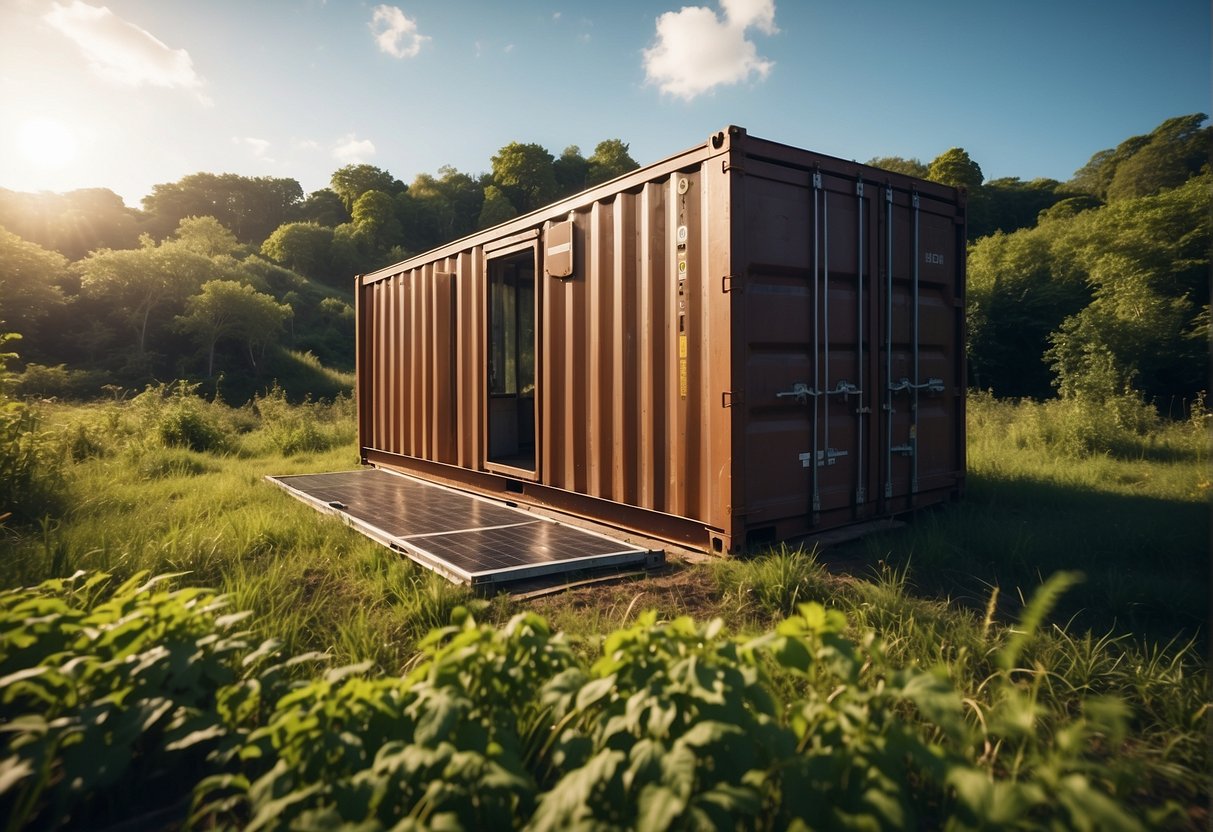
However, beneath the surface of this seemingly green construction method lies a host of environmental and practical concerns. Shipping containers are indeed durable and strong, but they are not originally designed for habitation. The retrofitting process to make them suitable for living spaces requires significant alterations and energy, which can negate the eco-friendliness of using the containers. The insulation needed for temperature control inside a steel box, the challenge of repurposing a dark and airtight enclosure, and the complexities involved in cutting and welding these massive structures raise questions about the overall sustainability of shipping container architecture.
Furthermore, inquiries into the lifecycle and real environmental cost of repurposed shipping containers suggest that the green credentials given to this design trend may need closer examination. From the potential for high energy bills associated with heating and cooling to the realities of modifying these units for safe and comfortable living, it’s apparent that shipping container buildings may not always represent the pinnacle of eco-friendly design initially believed. As the dialogue within sustainable architecture evolves, it’s imperative to scrutinize the efficacy and impact of trends such as shipping container homes, ensuring they align truly with their purported ecological benefits.
Eco-Friendly Design Principles and Shipping Containers
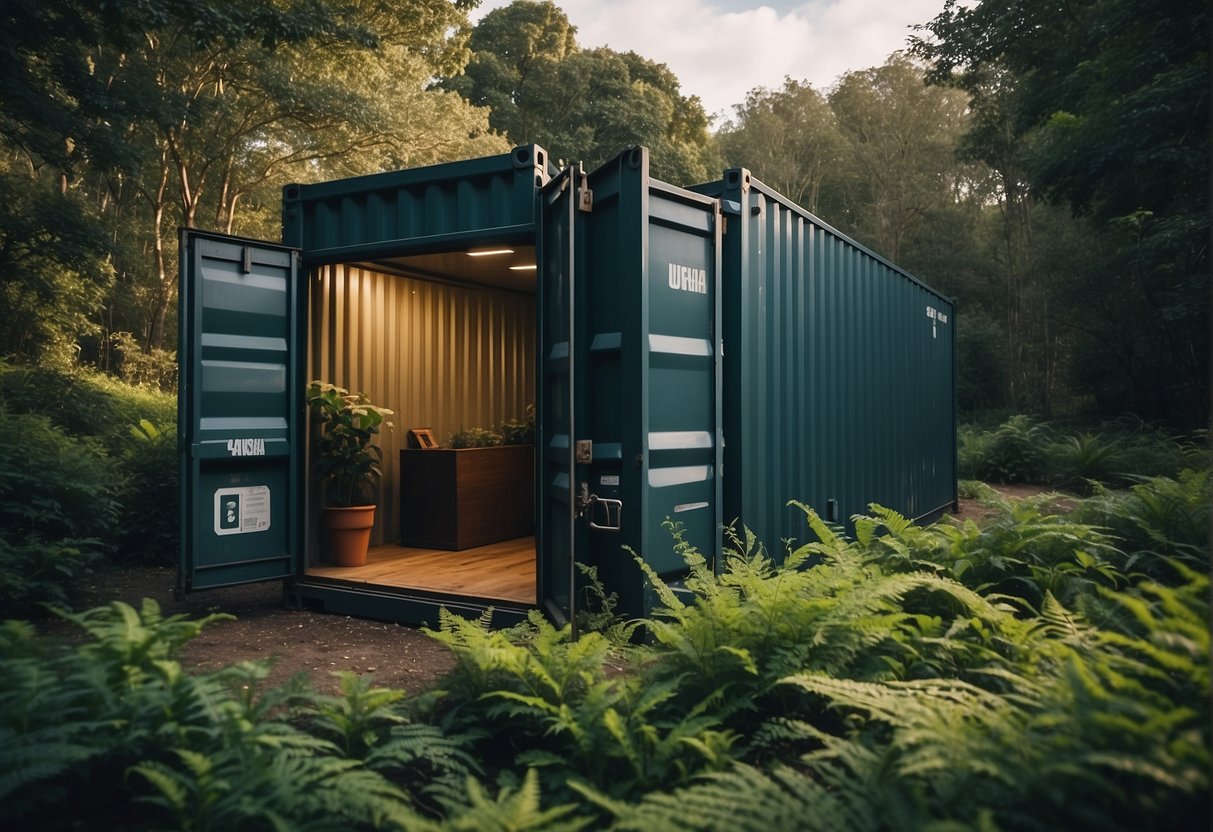
The interplay between eco-friendly design principles and shipping container architecture has become increasingly significant in the dialogue of sustainable living. This section explores how these principles apply to the reuse of shipping containers in building practices.
Principles of Sustainable Architecture
Sustainable architecture is the practice of designing buildings that minimize environmental impact, focusing on energy efficiency, resource conservation, and the use of sustainable materials. Essential elements include integrating solar panels to harness energy, maximizing natural sunlight, and promoting effective thermal insulation.
Rise of Shipping Container Architecture
The trend of shipping container architecture stems from the need to repurpose the millions of excess containers that sit idle across the globe. This innovative approach embodies sustainability by repurposing steel boxes intended for transporting cargo into functional, habitable spaces.
Key Attributes of Eco-Friendly Shipping Containers
Eco-friendly shipping containers are celebrated for their modular nature and the energy efficiency they can offer. Sustainable modifications often include:
- Installation of solar panels for renewable energy sourcing
- Strategic placement to benefit from shade and reduce cooling demands
- Utilization of energy-efficient doors and windows to minimize heat transfer
Importance of Insulation in Container Homes
Effective insulation is crucial within container homes to overcome the inherent conductive nature of steel. Insulation directly impacts the home’s energy consumption by keeping interiors warm in winter and cool in summer, thus enhancing the eco-friendliness of these structures.
Benefits of Modular Shipping Container Design
The modular design of shipping containers allows for creative, flexible architectures that can easily be expanded or repurposed. This aspect aligns with eco-friendly principles, such as reducing waste and adapting to changing needs without the environmental cost of new construction.
Economic Aspects of Shipping Container Architecture
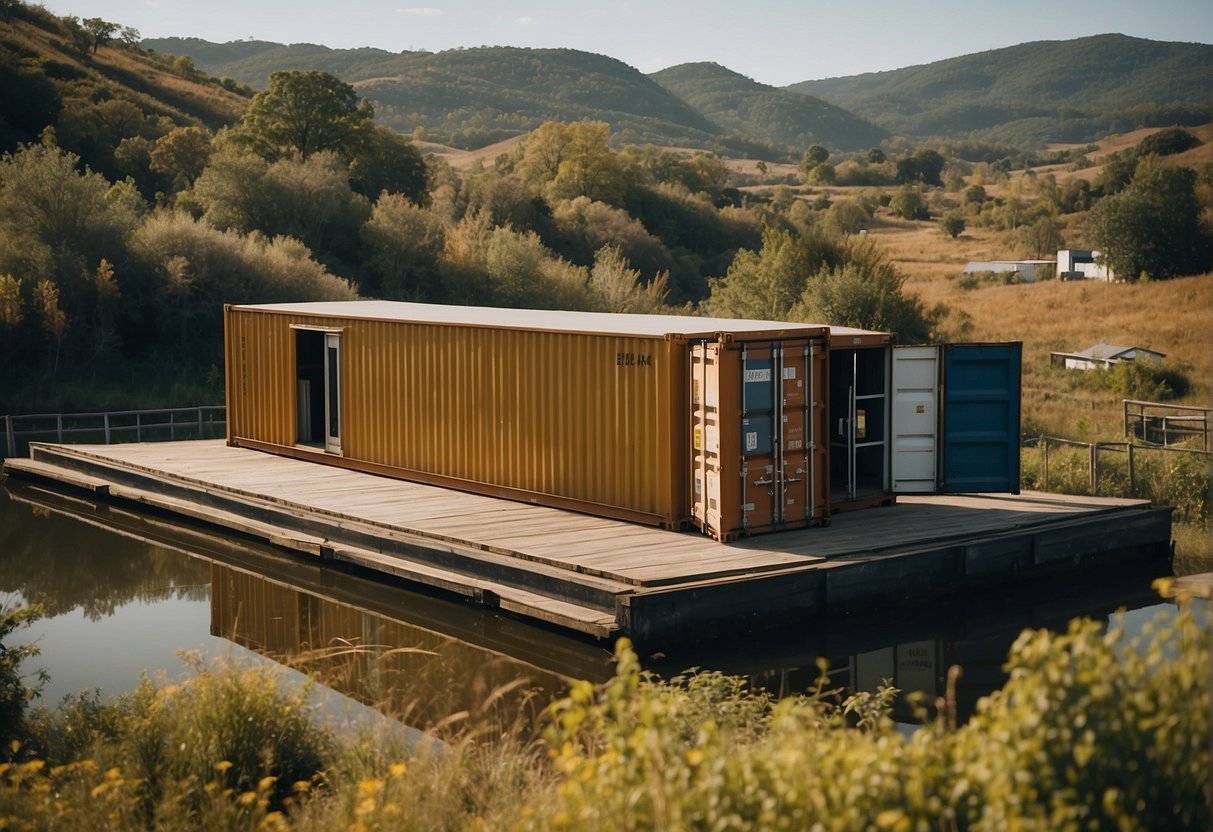
In exploring the economic aspects of shipping container architecture, one discovers a complex interplay between cost-efficiency, the potential for creating affordable housing solutions, and the price dynamics compared to traditional building materials.
Cost-Efficiency of Shipping Container Use
Shipping containers have become a cost-effective resource in eco-friendly architecture. Their structural integrity allows for reuse in building construction, significantly reducing costs associated with new materials. Prefabricated modules made from shipping containers further economize the construction process through decreased labor and time expenditures.
Shipping Containers as Affordable Housing Solutions
Affordable housing has been a persistent challenge in urban settings, and shipping container homes have emerged as an economical alternative. These homes are often more affordable than conventional housing due to the lower cost of recycled containers and the ability to transport the prefab units to various locations, which reduces expenses associated with traditional construction.
Price Comparison with Traditional Building Materials
When comparing shipping containers to traditional construction materials such as brick and cement, one notes a stark contrast in costs. The recycling of shipping containers embodies an economically sensible practice, offering a cost reduction not found with new traditional materials. However, adaptation and insulation costs can mitigate these initial savings, bringing the overall price closer to that of conventional methods.
Architectural and Design Considerations
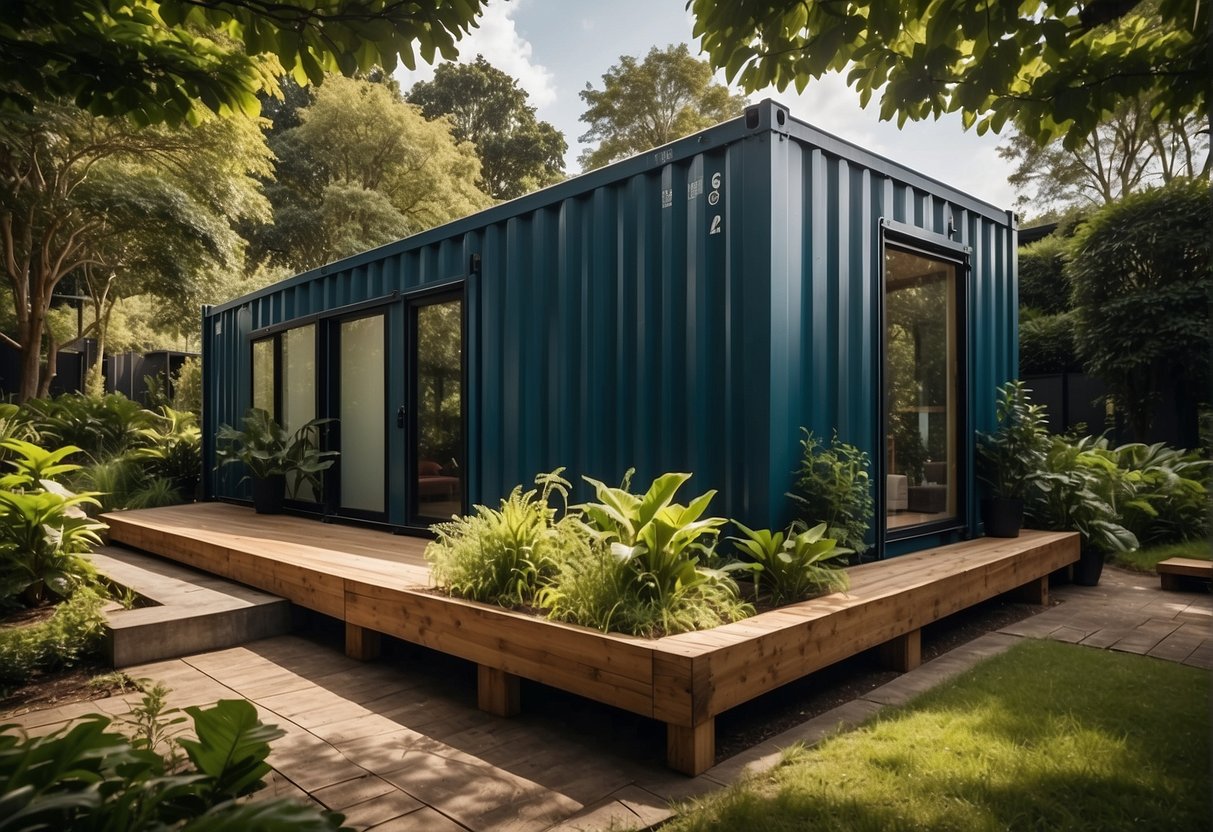
Shipping container architecture, often lauded for its sustainability, poses unique challenges and opportunities in design and customization. While it may offer innovative solutions, architects face considerable constraints in adapting these structures for habitable spaces.
Customization Possibilities
The potential for customization in shipping container architecture is significant, but it depends greatly on the expertise of the architects involved. Modifications such as cutting for windows and doors, increasing ventilation, and adding insulation are essential for creating comfortable living spaces. Cargo-tecture has propelled the innovative reuse of these containers but requires skill to ensure structural integrity is not compromised.
Innovative Floor Plans and Configurations
Architects have developed various floor plans and configurations, pushing the boundaries of traditional residential architecture. Projects, inspired by works like the Container Atlas, demonstrate a breadth of creativity—from Kengo Kuma’s organized, airy designs to James Whitaker’s dynamic, starburst configurations. These designs often necessitate complex structural calculations to maintain safety and functionality.
Construction Challenges with Shipping Containers
Securing building permits can be one of the most significant hurdles for shipping container construction due to unfamiliarity with the unconventional building style. The modification process, integral to transforming containers into livable spaces, might affect structural integrity, making compliance with local building codes more complex.
Design Evolution of Container Architecture
The design evolution of container architecture reflects growing interest and acceptance within the architectural community. Adaptive reuse of shipping containers often demands innovative methods to address issues such as thermal performance and acoustics. Progressive architects embrace the challenge, recognizing that successful integration of containers in architecture hinges on careful consideration of these design elements.
Material Durability and Maintenance
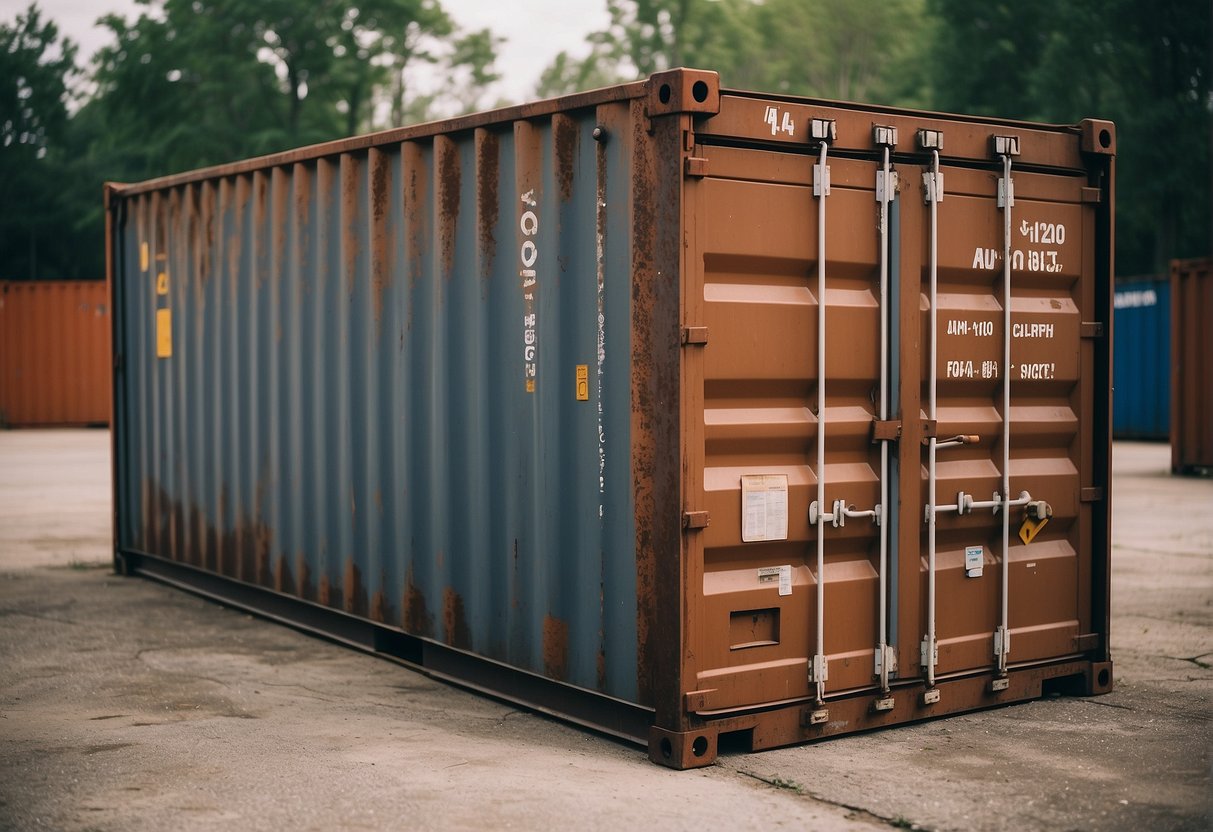
The use of shipping containers in architecture presents unique challenges in terms of material durability and ongoing maintenance, impacting their lifespan as sustainable solutions.
Corrosion Resistance and Steel Durability
Shipping containers are designed to withstand harsh marine environments, which suggests a degree of durability. However, once they are repurposed for architectural uses, the steel’s corrosion resistance becomes a central concern. The original protective coatings may deteriorate over time, leading to rust and the need for additional treatments to maintain structural integrity.
Maintenance of Modified Shipping Containers
Modifications to shipping containers such as cutting for windows, doors, or utilities could compromise their structural resilience. Proper maintenance is required to prevent rust and corrosion at these modification sites. Additionally, used containers may come with a history of wear, necessitating more frequent inspections and repairs.
Lifespan of Repurposed Shipping Containers
Although the durability of recycled materials like steel is a benefit, a repurposed shipping container‘s lifespan may still fall short compared to traditional construction methods. Factors such as the quality of the used containers, the environment they are placed in, and the level of maintenance they receive, play critical roles in determining their longevity as upcycled architectural elements.
Environmental Impact and Sustainability
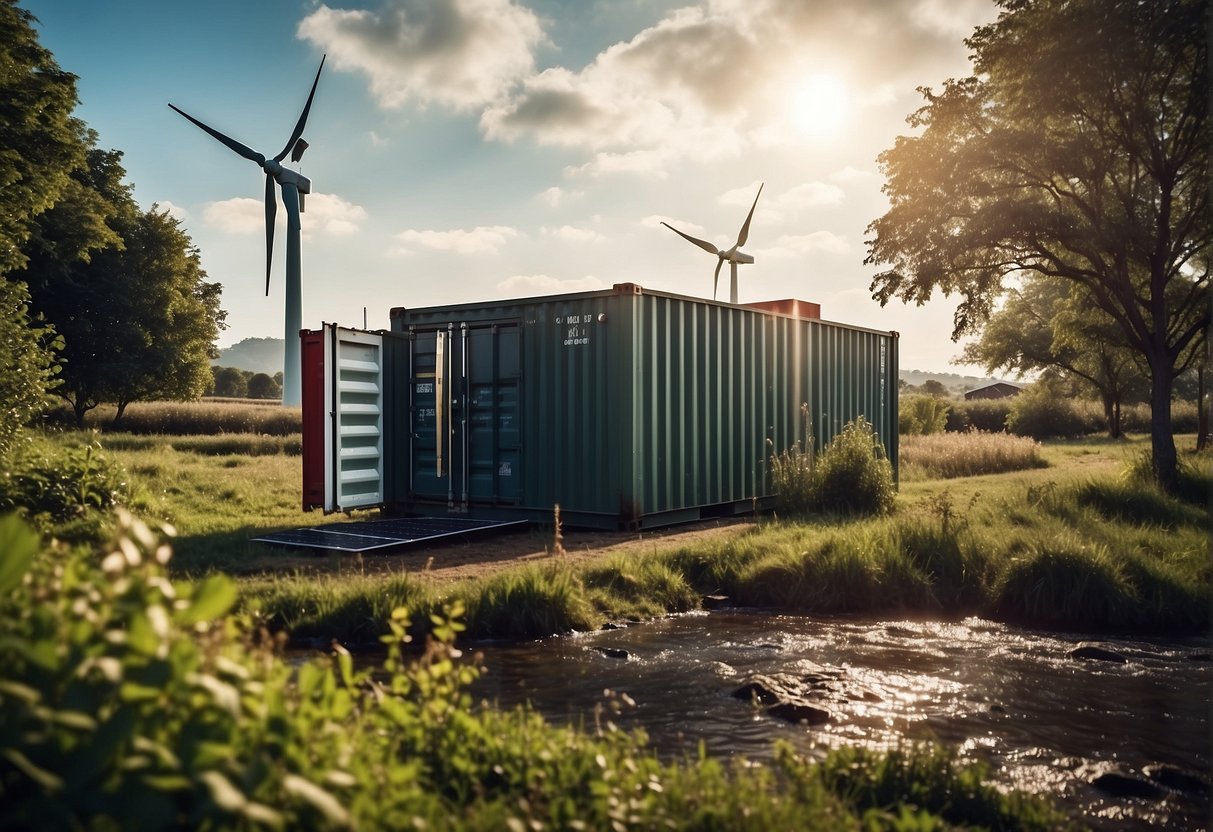
In the realm of eco-friendly architecture, shipping containers represent a fusion of recycling practices and sustainability principles. However, assessing their true environmental impact and sustainability requires a deeper examination of emissions, energy usage, and ecological considerations.
Reduced Emissions and Energy Use
Shipping containers, when repurposed for architectural uses, potentially lower emissions and energy use. The act of recycling shipping containers into buildings diverts them from scrapyards, minimizing the energy-intensive process of melting down steel. Additionally, incorporating energy-efficient features—such as solar panels—further enhances their energy performance.
Rainwater Harvesting Systems in Container Homes
Container homes may incorporate rainwater harvesting systems, a testament to their eco-conscious capabilities. This feature not only reduces a building’s demand on municipal water supplies but also lessens site runoff, aiding in local ecological balance. Rainwater, once collected, can be used for non-potable functions, playing a key role in the structure’s overall resource efficiency.
Ecological Benefits and Environmental Considerations
Building with shipping containers may offer ecological advantages by leveraging recycled materials and reducing the need for new resources. Nevertheless, it’s crucial to consider the full lifecycle of these structures. Even though they capitalize on an already-produced material, the environmental benefits are complex—modifications required for habitation can alter their sustainability profile. For instance, the insulation necessary to make them livable can involve materials that are not environmentally benign.
Regulatory, Legal, and Practical Challenges

The transformation of shipping containers into eco-friendly architectural elements brings with it a complex set of regulatory, legal, and practical considerations that must be thoroughly evaluated to ensure project feasibility and compliance.
Compliance with Building Permits and Regulations
Securing building permits for container-based structures often entails a stringent review process to conform to local zoning laws and building codes. Each municipality has its own set of regulations that dictate structural requirements, aesthetics, and land use. They must obtain permits verifying that their design and construction methods meet these standards, which can vary significantly across regions and may necessitate costly adjustments to project plans.
Handling of Heavy Loads and Structural Integrity
The inherent strength of shipping containers to withstand heavy loads is beneficial, yet their modification must be done carefully to maintain structural integrity. Architectural alterations, such as cutting openings for windows or doors, can compromise the container’s ability to bear loads. Engineers and architects need to ensure that additional reinforcement and appropriate materials are used to support these changes without violating safety guidelines.
Challenges in Climate Control and Heating/Cooling
Effective climate control and establishment of efficient heating and cooling systems are critical for the inhabitability of container-based structures. Shipping containers are primarily composed of steel, a material with high thermal conductivity, which can lead to significant heat gain or loss. Integrating insulation and HVAC systems that meet energy codes is essential, and these systems must be designed to tackle the unique thermal properties of container buildings without incurring prohibitive energy consumption.
Global Examples and Case Studies
This section explores specific instances and analyses of shipping container architecture across various global locations, including innovative projects, a case study in South Africa, developments in Seoul, and the evolution within Germany.
Innovative Container Projects Worldwide
Shipping containers have been repurposed worldwide for their structural integrity and modular convenience. Projects varying from commercial hubs to residential spaces have demonstrated the adaptability of these seemingly mundane structures to serve new, architectural functions. An example of this breadth is the Stadium 974 in Qatar, which ingeniously utilized 974 shipping containers in its design for the FIFA 2022 World Cup.
Case Study: Drivelines, South Africa
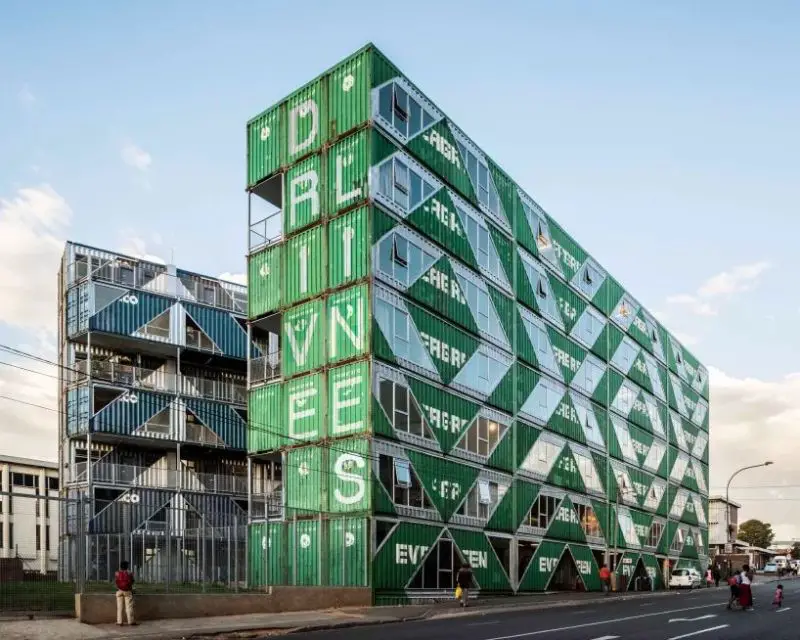
In Johannesburg, Drivelines Studios, designed by New York-based firm LOT-EK, is a remarkable example of container architecture innovation. The complex offers affordable housing using upcycled shipping containers stacked and rotated to provide studio apartments with balconies, illustrating the potential for eco-friendly solutions in urban South African settings.
Container City and Common Ground, Seoul
Seoul has embraced container architecture with projects like Container City and Common Ground. Common Ground, the world’s largest mall made entirely of shipping containers, showcases a contemporary architectural approach that harmonizes with the city’s dynamic culture while offering eco-conscious retail space.
Evolution of Container Architecture in Germany
Germany has witnessed an evolution in container architecture, integrating these versatile units into its urban fabric. Projects ranging from student housing complexes to standalone homes reflect the growing importance of containers as sustainable architectural solutions within the German design landscape.
Practical Applications and Diverse Uses

Shipping containers have emerged as a versatile solution in architecture, offering modular and prefab construction options across residential, commercial, and emergency contexts. Their sturdiness and adaptability enhance their appeal for various applications.
Shipping Containers in Residential Spaces
Shipping containers’ modular nature makes them ideal for creating tiny homes and other residential spaces. Their inherent structure allows for significant DIY customization, transforming into eco-conscious living spaces replete with steel studs and modern amenities. In residential construction, containers provide an alternative to traditional building methods, often reducing labor and material costs.
Adapting Containers for Commercial Use
Container architecture extends to commercial spaces such as hotels and retail environments. The trend of utilizing shipping containers as shop or office building structures has grown due to their portability and ease of modification. For example, a coffee shop may occupy a repurposed container, offering a unique aesthetic and a small environmental footprint.
Building Offices, Shops, and Creative Spaces with Containers
In urban areas, where space is at a premium, shipping containers have been transformed into innovative workspaces. They serve as offices, workshops, and creative spaces where the blend of industrial look and modern design can be appealing. Thanks to their modular design, containers can stack to maximize vertical space and are quickly becoming a staple in the creation of tiny home complexes and office buildings.
Container Use in Response to Natural Disasters
In the wake of natural disasters, the swift deployment of shipping containers is critical. They are swiftly converted into temporary housing, medical units, and storage units, providing immediate relief in affected areas. Their robust construction provides a level of stability and safety essential for use in environments recovering from nature’s unpredictability.
Conclusion
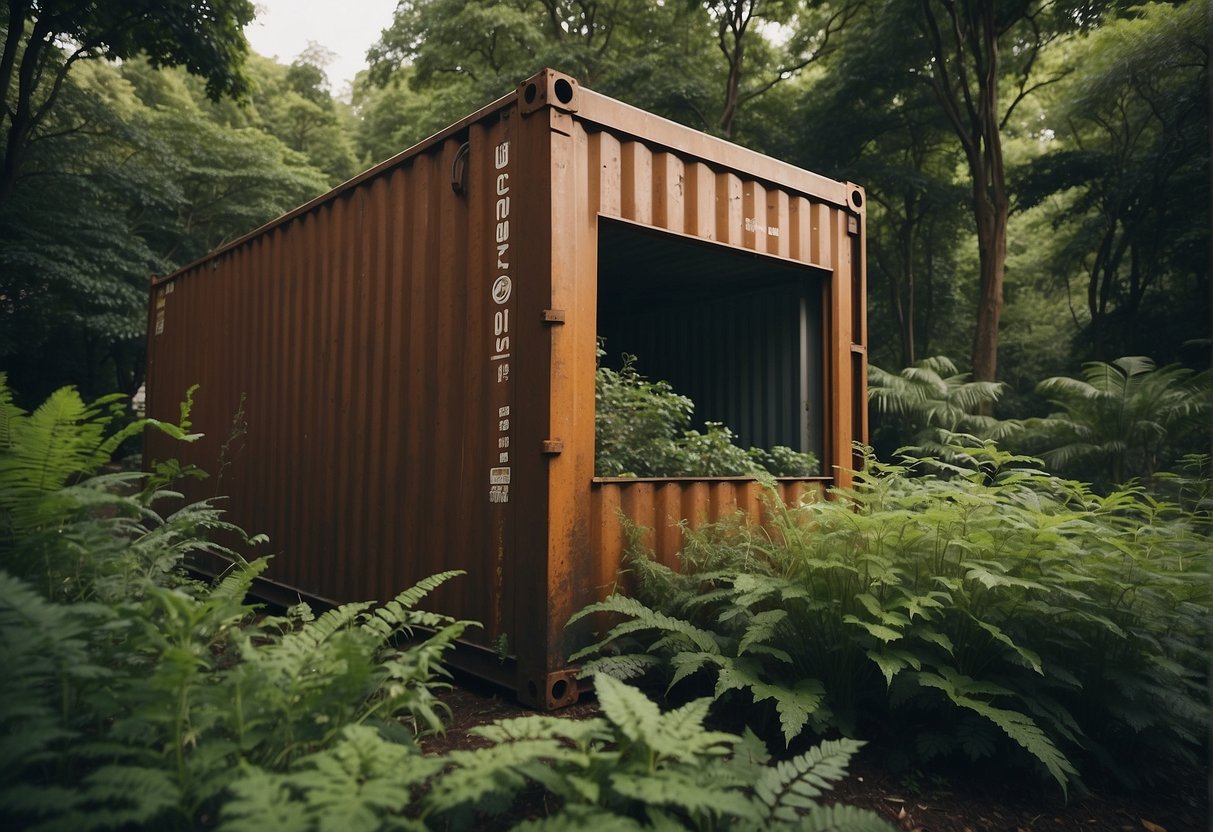
Shipping container architecture has been lauded for its innovation and supposed sustainability in eco-friendly construction. However, a thorough examination suggests that sustainability credentials may be overstated. While these structures are often praised for using recycled materials, the reality involves significant environmental implications.
Firstly, the modification of shipping containers for habitation entails energy-intensive retrofitting. Insulation, cutting of additional openings, and reinforcement translate into a high-energy footprint. The vital use of eco-friendly materials and the hidden costs associated with interior fit-outs should be carefully considered, as highlighted by discussions around the relatively high costs of container architecture interiors.
Secondly, containers’ modularity and convenience must be weighed against the potential for restricted space and the challenge of creating a comfortable living environment without using excessive amounts of energy or non-sustainable materials. Architects and clients must navigate these material and design constraints, with some projects struggling with size limitations.
Acknowledging these points, it becomes clear that shipping container architecture should be approached with a critical and nuanced understanding of eco-friendliness. It remains an innovative form of architecture but requires careful planning and consideration of the entire lifecycle to ensure that its environmental impact is minimized. The architectural community continues to evolve, working towards real sustainable solutions while addressing the complexities of repurposing shipping containers.
